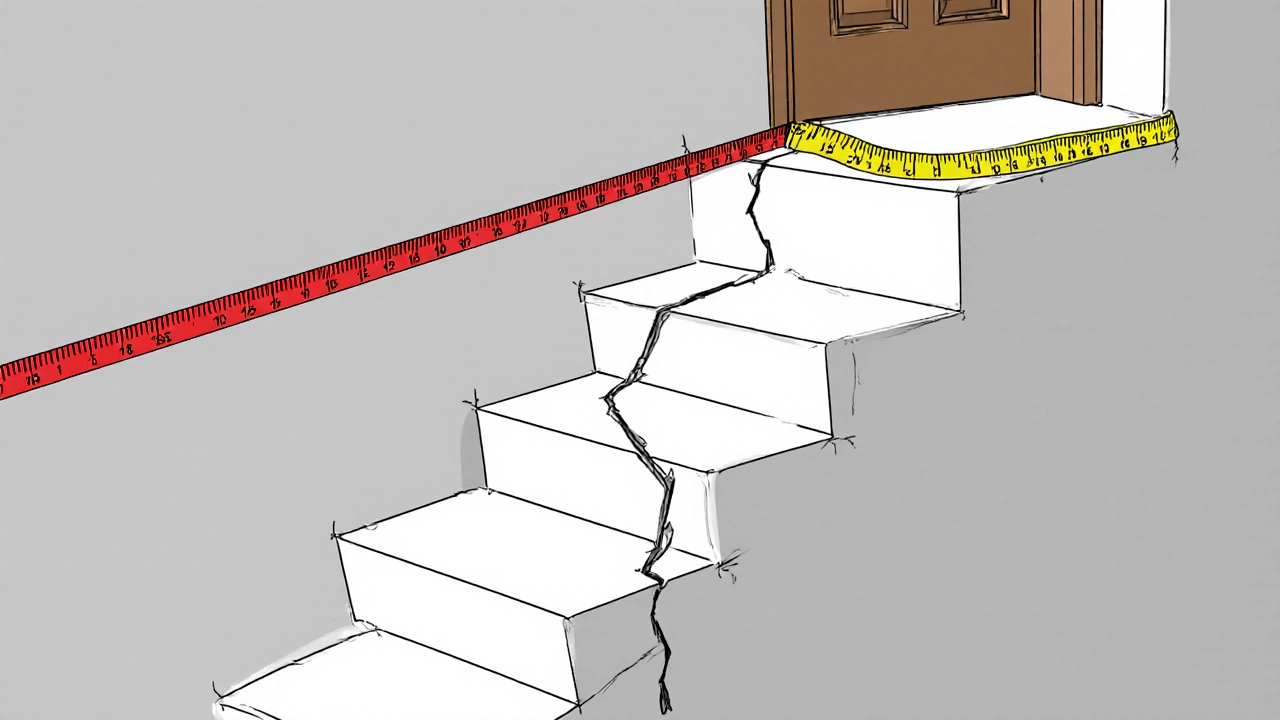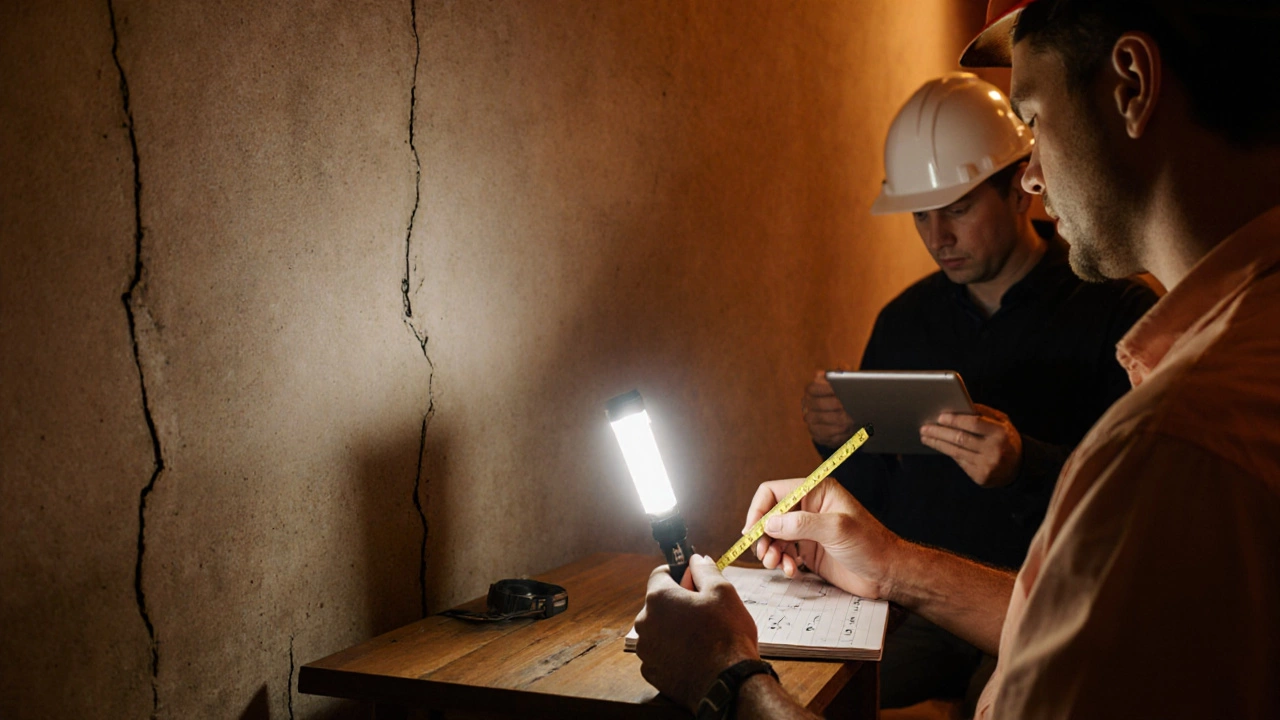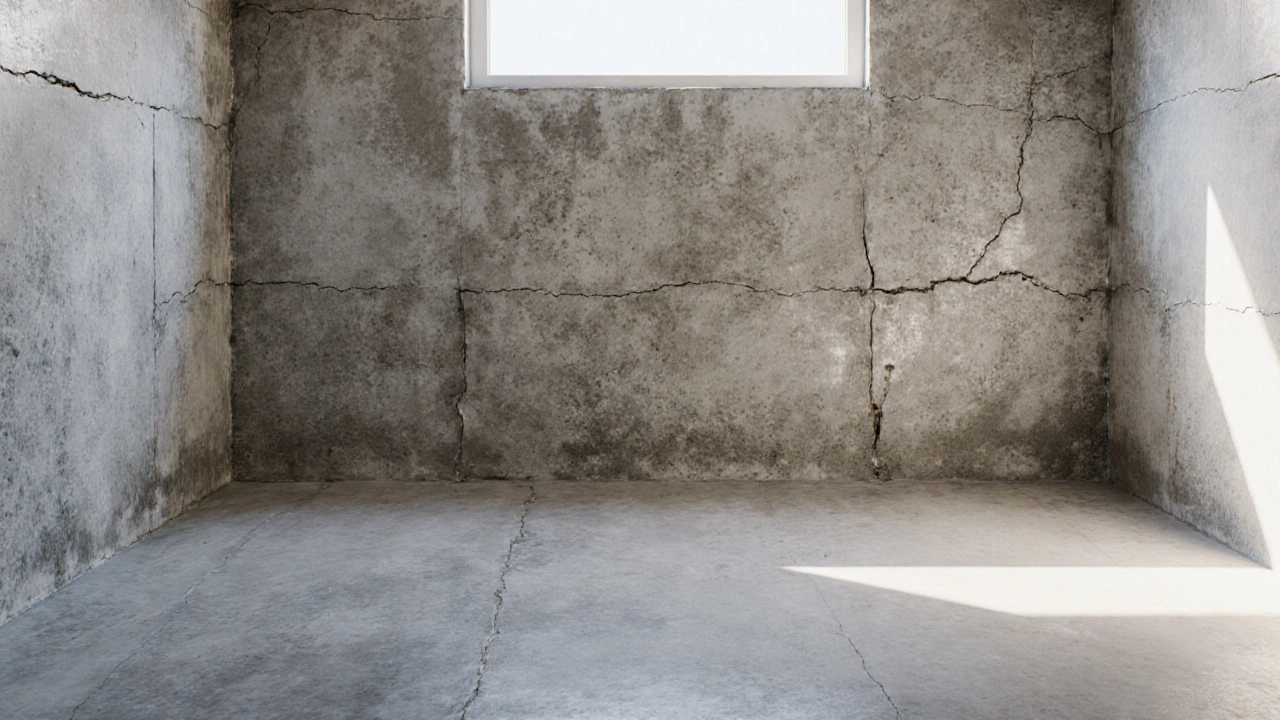Identifying Bad Foundation Cracks: What to Look For
Spotting a problem early can save you from a costly rebuild. When it comes to a foundation crack, not every line in the wall means disaster, but certain patterns are clear warning signs. This guide walks you through exactly what a bad crack looks like, why it matters, and how to decide whether a professional is needed.
What a Healthy Foundation Looks Like
Before you can spot trouble, understand the baseline. A sound foundation is a structural base that evenly distributes a building's weight into the ground, typically made of concrete, masonry, or piled footings. In a well‑constructed home, the foundation should appear flat, with no visible gaps or shifts in the floor or walls.
How to Spot a Bad Crack
Not every hairline line is a catastrophe, but keep an eye out for these tell‑tale features:
- Width over ¼ inch (6mm) - anything thicker than a pencil line often indicates movement.
- Horizontal orientation on basement walls - this pattern is linked to pressure from expanding soil.
- Diagonal or stair‑step cracks that change direction - suggests differential settlement.
- Cracks that widen over time - mark the ends and revisit after a few weeks.
- Accompanying doors or windows that stick - movement in the frame usually travels with the foundation.
When you see one or more of these, the crack is likely “bad” and needs further evaluation.
Types of Foundation Cracks and Their Meaning
| Crack Type | Typical Location | Common Cause | Severity Indicator |
|---|---|---|---|
| Vertical | Exterior walls, slab edges | Drying shrinkage, minor settlement | Usually non‑structural if <¼" wide |
| Horizontal | Basement or crawl‑space walls | Soil pressure, hydrostatic forces | Potential structural issue when >¼" |
| Diagonal (45°) | Anywhere, often near doors | Uneven settlement, shifting soil | Worrisome if expanding quickly |
| Step/ Stair‑step | Across wall joints | Foundations moving in separate planes | High risk - indicates severe movement |
Understanding these patterns helps you gauge whether a crack is simply cosmetic or a sign of structural damage compromise to a building’s load‑bearing components that can affect safety and habitability.

Why Width and Pattern Matter
The crack width measurement from one side of the fracture to the other, usually recorded in millimetres or inches is the quickest severity gauge. A rule of thumb used by UK builders:
- Less than 1mm - generally harmless shrinkage.
- 1mm to 6mm - monitor for growth; may signal minor settlement.
- Over 6mm - treat as potentially serious; call a professional.
Pattern adds context. Horizontal cracks on a basement wall over 6mm often point to excessive soil movement shifts in the earth surrounding a foundation caused by moisture changes, freeze‑thaw cycles, or load variations, which can exert lateral pressure.
When to Call a Professional
If you notice any of the following, it’s time to bring in a structural engineer a qualified professional who assesses building integrity and recommends remediation or a reputable foundation repair contractor:
- Crack width exceeds ¼ inch (6mm).
- Horizontal or stair‑step cracks appear on interior or exterior walls.
- Doors, windows, or cabinets suddenly jam or swing.
- Visible sloping floors or wobbling walls.
- Signs of moisture - damp patches, mold, or pooling water near the foundation.
These issues often require underpinning, pier installation, or waterproofing-solutions beyond DIY.

DIY Inspection Checklist
Before you pick up the phone, run through this simple checklist:
- Gather a flashlight, measuring tape, and a marker.
- Inspect the entire perimeter - look for cracks, gaps, or displaced bricks.
- Measure the widest point of each crack; record the size.
- Mark the ends of each crack with a pencil; check back after 2‑3 weeks.
- Test doors and windows for smooth operation.
- Note any moisture, moss, or pooling water near the base.
- Take photos for reference and for any professional you may contact.
Having this data ready speeds up quotes and helps contractors pinpoint the problem.
Preventing Future Cracks
Even after repairs, good habits can keep new cracks at bay:
- Maintain consistent garden irrigation - avoid over‑watering near the foundation.
- Install proper drainage (French drains, gutter extensions) to keep water away.
- Ensure soil around the house is compacted and graded away from the base.
- Monitor tree roots; large trees can pull on the soil and stress foundations.
- Schedule annual checks, especially after heavy rain or a freeze‑thaw cycle.
These steps target the root causes of moisture intrusion unwanted water entry that can weaken concrete and expand soil, leading to settlement and cracks.
Frequently Asked Questions
How wide does a foundation crack have to be before it’s dangerous?
If the crack measures more than ¼ inch (6mm) across, especially on a basement wall, it’s generally considered a red flag that warrants professional evaluation.
Can I fill a bad foundation crack myself?
Small, non‑structural cracks can be sealed with epoxy or polyurethane, but a bad crack-one that is wide, horizontal, or growing-needs engineered repair. DIY fixes won’t stop underlying movement.
What causes horizontal cracks in basement walls?
Horizontal cracks usually result from lateral soil pressure, often due to water buildup behind the wall. Poor drainage or high groundwater levels increase this pressure.
Do temperature changes affect foundation cracks?
Yes. Freeze‑thaw cycles can expand and contract soil, especially clay, causing movement that widens existing cracks.
When should I call a structural engineer instead of a contractor?
If you see large horizontal or stair‑step cracks, significant settling, or any signs of compromised load‑bearing elements, a structural engineer should assess the risk before any repair work begins.







Comments